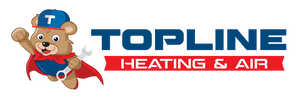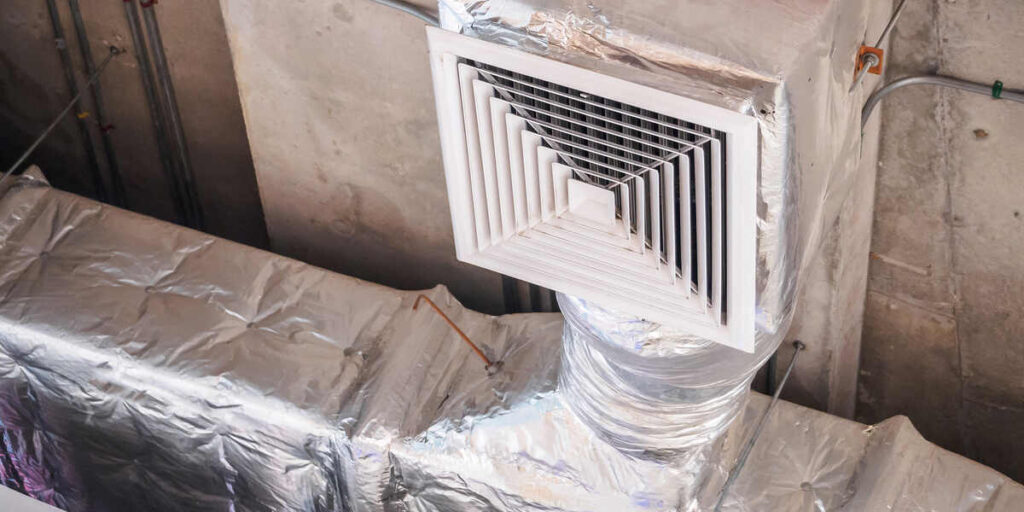Do you need help with your furnace system? Call Topline Heating & Air today at (717) 628-6825 for expert solutions.
Furnaces are a regular fixture in most homes across Pennsylvania. You need one at full capacity to navigate the winter months, where temperatures routinely drop below freezing.
Thus, it makes perfect sense to learn as much as possible about your system’s operation to ensure it’s working as well as it should. As leading furnace maintenance professionals in Honey Brook, PA, we get many questions on this as many people call to find out one detail or the other about their system.
Some of our clients call to know which way is airflow on furnace systems, and that’s what we’ll dissect in this article.
Airflow Directions in a Furnace
One of the first things you should know about furnace systems is that they don’t have a universal airflow direction. Manufacturers make furnaces with airflow following three major patterns.
So, when you ask, “Which way is airflow on furnace systems,” the right answer will be, “It depends on your system.”
The Three Major Directions for Furnace Airflow
Your furnace will likely have downward, upward, or horizontal airflow.
Downflow
In a downflow furnace, cold air enters from the top of the unit, and warm air exits into your air ducts from the bottom, sending warm air to different parts of your home. Downflow furnaces are best for homes with enough space in the attic.
If you don’t have an attic, you can install the system on the upper floors of your home. The furnace’s operation will be more efficient this way. However, there’s a caveat; the most efficient downflow furnace will still be less efficient than an upflow furnace because heat naturally rises.
So, downflow furnaces have to work against nature to heat a home. As a result, the bulk of the heat disappears around the ceiling.
Upflow
If you have an upflow furnace, the furnace system takes in cold air from the bottom of your unit and expels it upwards. These units are better at keeping spaces comfortable in the winter because, as we mentioned above, heat rises from the floor of a room upwards.
If your furnace is in the basement, then the air flows upward. In fact, having a basement is one of the requirements to install an upflow furnace.
Horizontal Flow
Air enters horizontal flow systems from one side and exits from the other. You can identify these systems by how they look. Does your furnace look like it’s lying on its side? If so, you have a horizontal system.
They are a good fit for homes where the crawl space or attic is too tight to house an upright furnace.
The configuration of horizontal flow systems is slightly more complicated because they can be:
- Horizontal right
- Horizontal left
- Downflow horizontal
- Upflow horizontal
You can determine the direction of the airflow for these systems by just looking at the name. It means that a horizontal right system expels hot air from the right side of the furnace and vice versa for a horizontal left furnace.
The configuration of these systems makes them an excellent fit for most homes, as they can fit anywhere. If you’re buying a new horizontal furnace or thinking about changing yours, it’s best to stick to those with upward, left, or right configurations for the best efficiency.
How to Figure Out Your System’s Airflow Direction
In the descriptions above, we mentioned the relationship between your furnace’s position and the airflow direction. So, you can get a pretty good idea of your system’s airflow direction by looking at the placement.
If you have a furnace in the attic, it’s most likely a downflow system; if located in the basement, it’s most likely an upflow system.
For a definitive answer or further confirmation, you can read through the user manual or the sticker documentation on the body of the system.
Most furnaces also have the airflow direction arrow on the metal panel around the filter housing.
Why Is It Important to Know Furnace Air Flow Direction?
Knowing the direction of airflow in your furnace will give you closer insight into how it functions. You’ll also need to know the direction of the airflow when installing your air filters. The filters help maintain your indoor air quality, but only if you install them correctly.
Generally, you should ensure the filters’ arrows are pointing in the direction of the airflow when replacing them. This often means making sure the arrows point toward the furnace blower compartment, but it helps to be sure of the airflow direction to avoid impeding the system’s function.
Installing the air filter in the wrong direction will also introduce contaminants into your home.
Which Airflow Direction Is Best for Furnaces?
If you’re thinking about buying an energy-efficient furnace, then you should choose standard furnaces with upward airflow. They don’t have to work too hard to heat your home, as we discussed above.
However, if you don’t have a basement, you can consider upflow horizontal systems. They operate on the same principles as conventional upflow systems but are compact enough to fit in any corner you can create for it in your home.
Keep in mind that the airflow direction is just one factor to consider when evaluating a system’s energy efficiency. Factors like the furnace size and the AFUE rating (Annual Fuel Utilization Efficiency) are also important factors to consider.
An undersized or oversized furnace will be highly inefficient regardless of the airflow direction.
Schedule a Consultation with Your Local HVAC Professional
We hope you now know the answer to “Which way is airflow on furnace systems,” but if you’re still unsure, we can help. We can send an expert to your home for a professional evaluation.
We can also help you change your filters or carry out any other type of furnace repair necessary to restore your system to peak performance.
Call Topline Heating & Air today at (717) 628-6825 if you have furnace problems in Honey Brook, PA.



